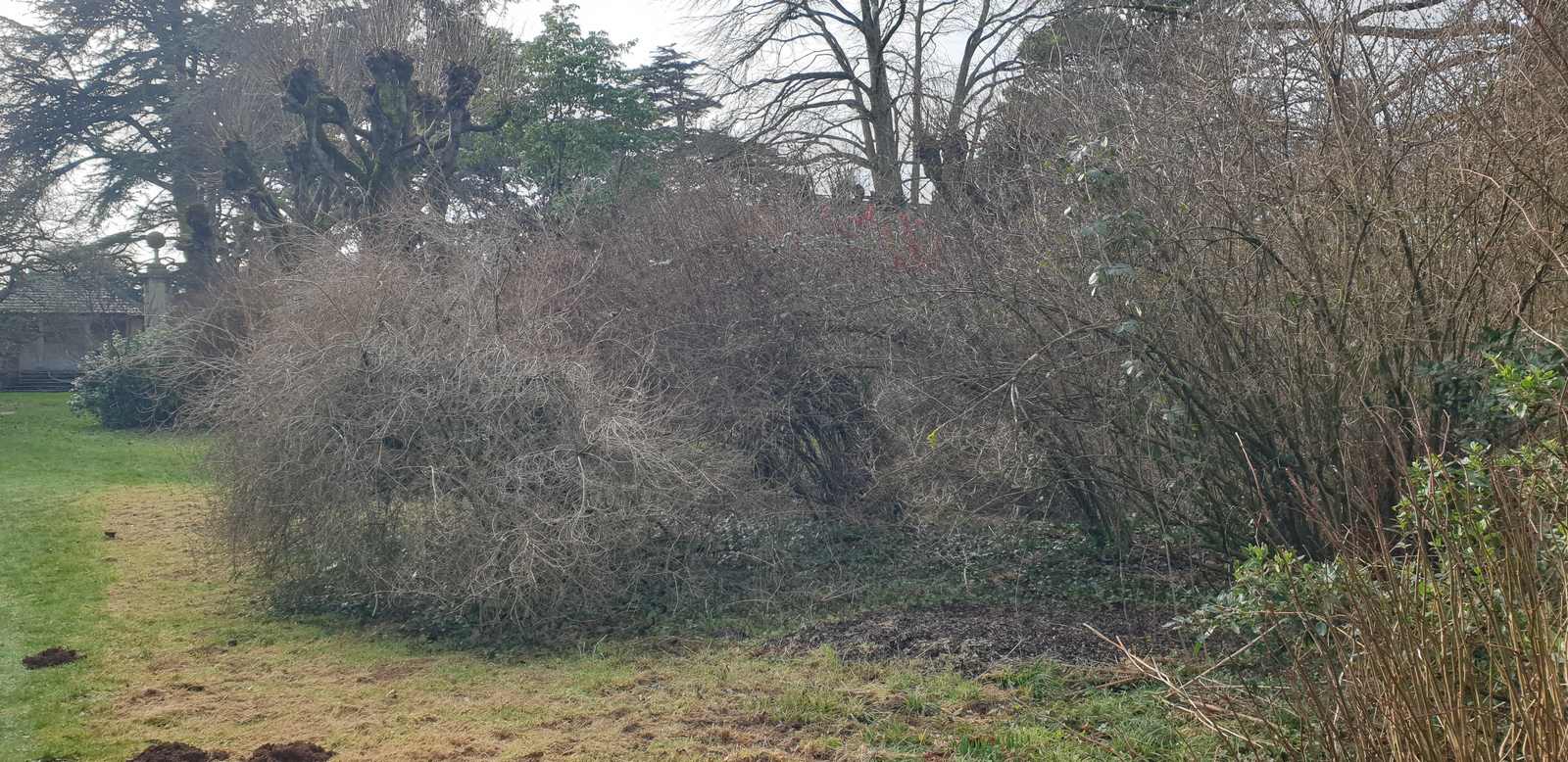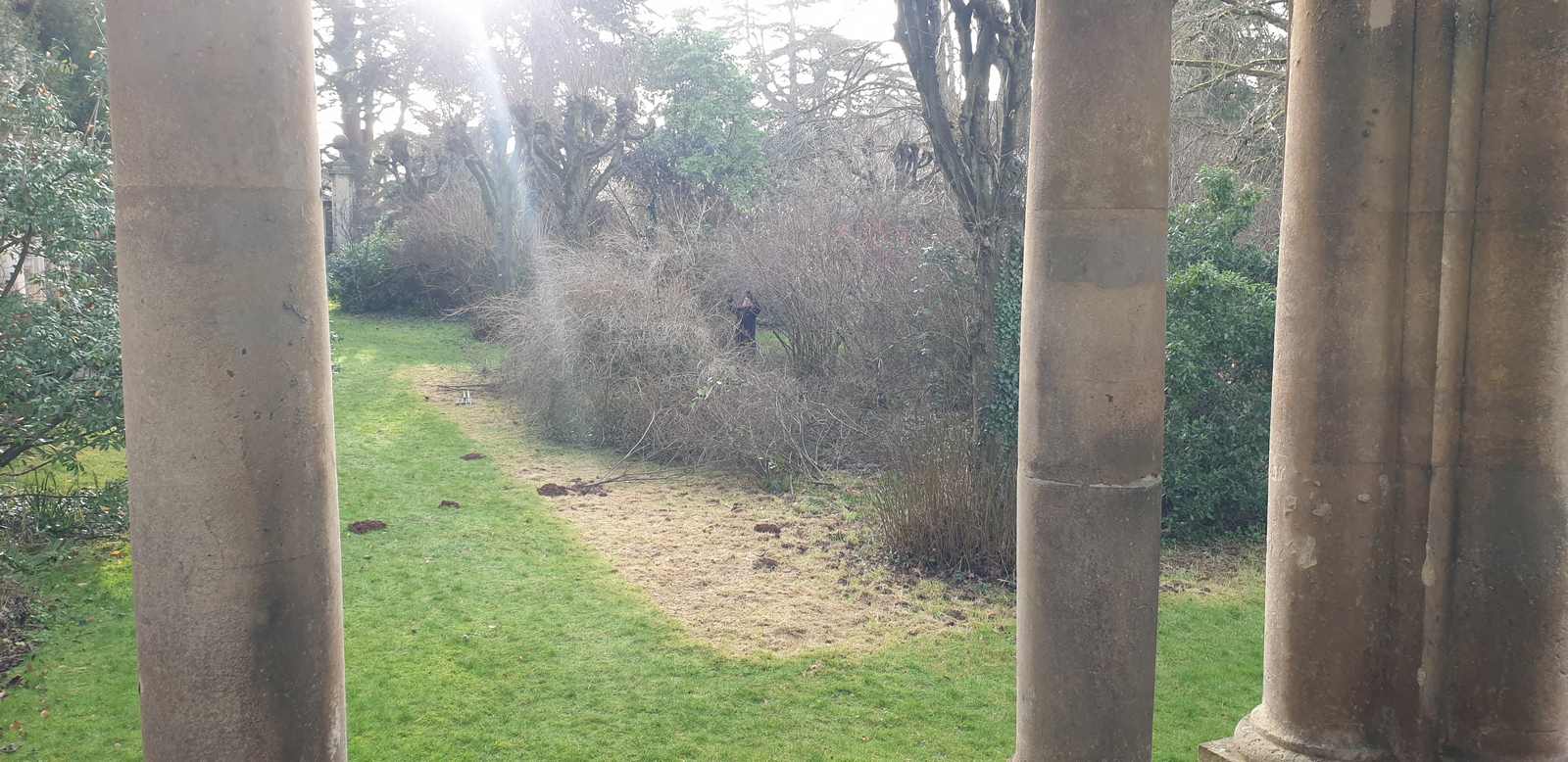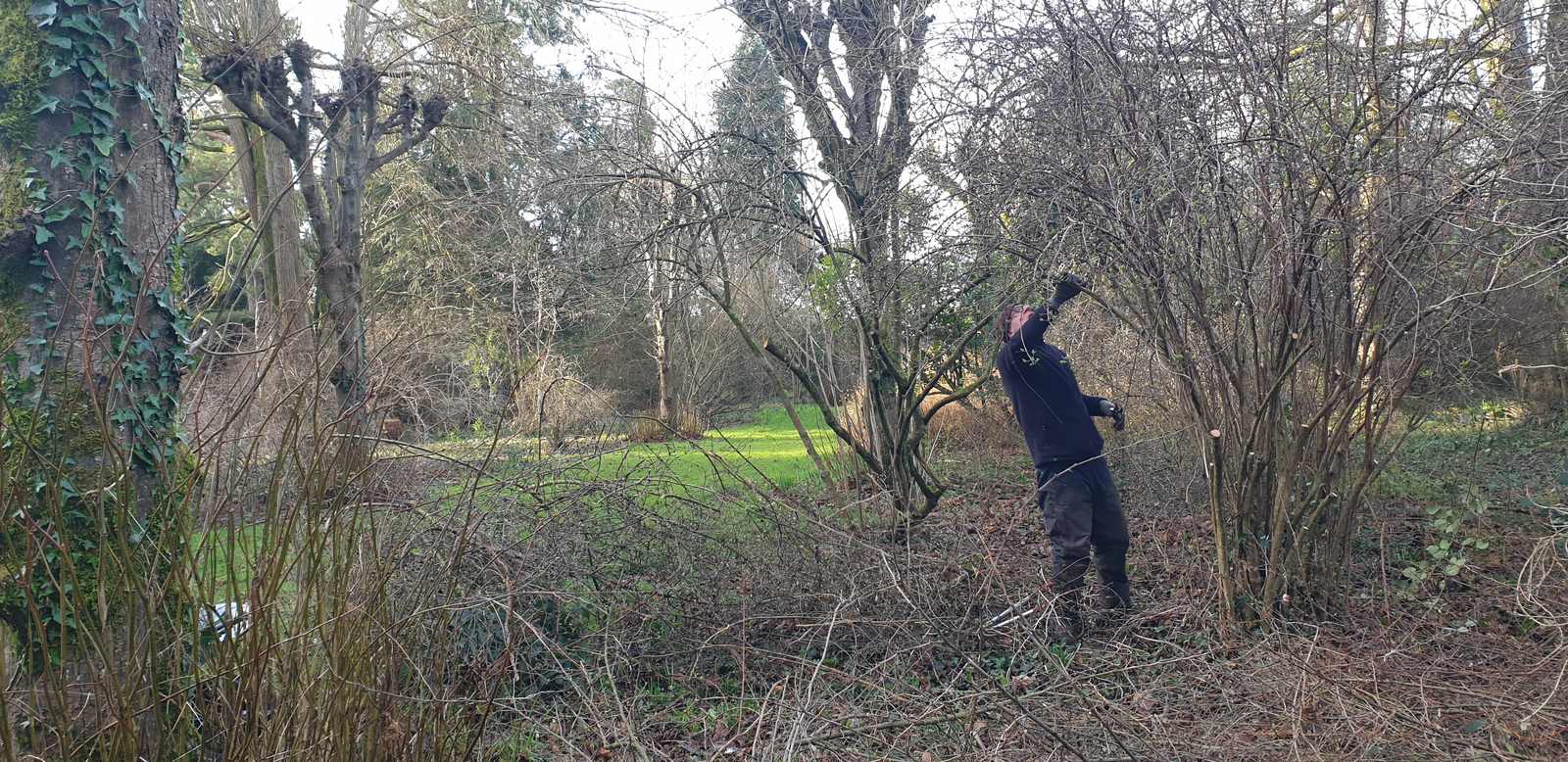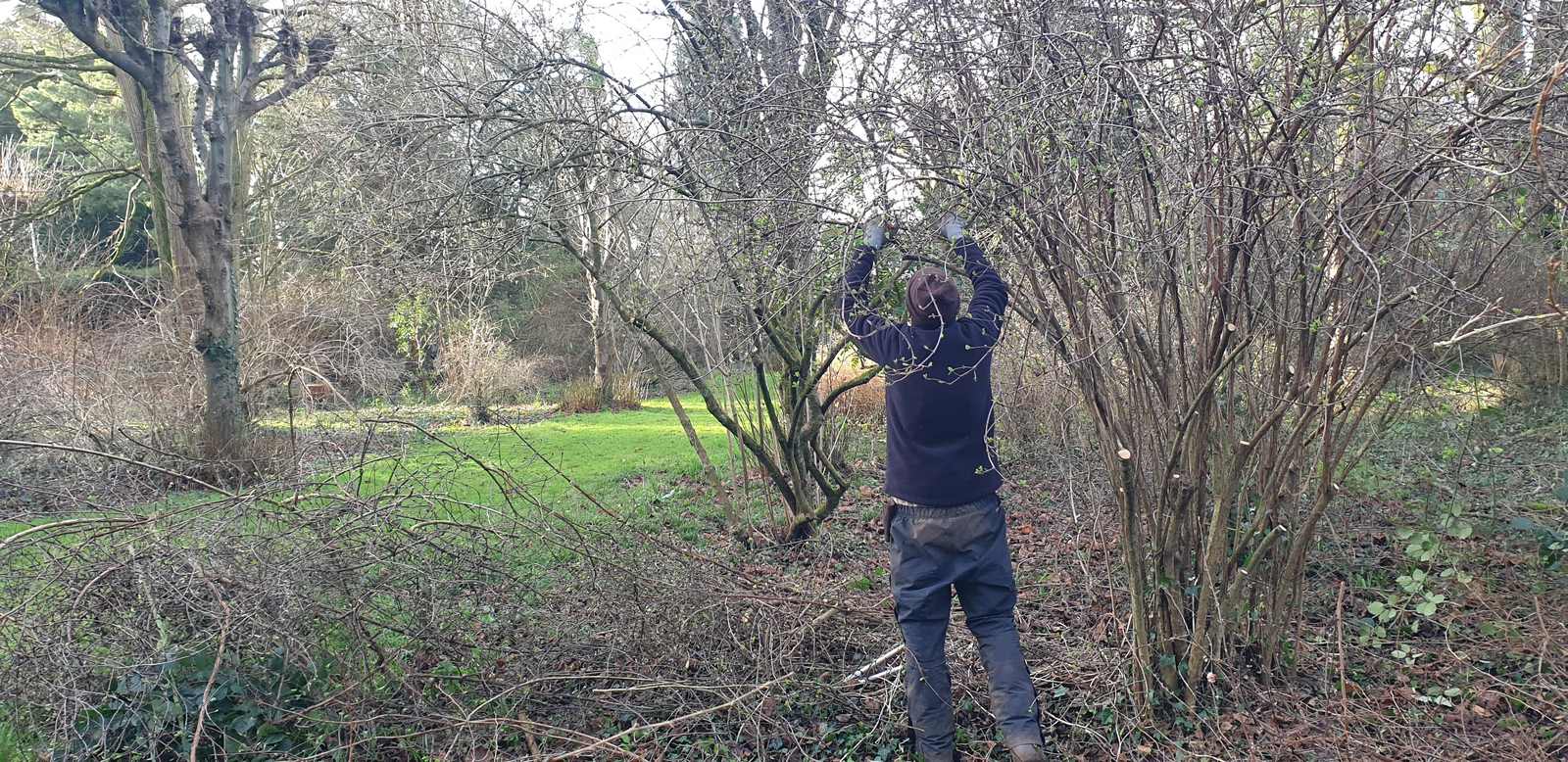Pruning a Viburnum x bodnantense
Some of my favourite flowering shrubs, providing successional flowering across much of the year, are Viburnum’s. A genus with over 100 species, and many hybrids, a particular garden favourite and deservingly popular is Viburnum x bodnantense, the hybrid of Viburnum grandiflorum and Viburnum farreri. One of the best winter flowering shrubs, full of fragrance and winter blossom. Although somewhat variable, it is a moderately open shrub with strong upright growth, arching over as branches age and new growth reaches for the light. Untended it can layer itself from the older arching branches and potentially form a dense thicket, congested, full of older twiggy growth and will flower less prolifically. As with many winter flowering shrubs, V. x bodnantense flowers on wood made in previous years, most prolifically 1 or 2 year old.
Renewal Pruning
You absolutely don’t want to treat Viburnum x bodnantense as a neatly clipped lump, topiary, or a hedge, trying needlessly to tidy up all that unruly growth. Enthusiastic shears or an intemperate hedgecutter, removing the younger wood to leave a neatly rounded dome. This is the wrong approach for this particular shrub whose qualities are its open habit, auburn bark and, most of all, its heady winter blossom. Let it grow as nature intended, just a helping hand with the renewal of healthy floriferous wood. The technique is called renewal pruning. Removing a proportion of older, twiggy, unproductive wood to encourage space and light for replacement shoots to mature and flower. Do a third of the plant every 3 years and you’ve renewed the entire shrub but all the while have had a continuous display of young healthy productive flower and form. The extent (frequency and degree) to which you carry out this task depends uniquely on each shrub – its location, significance, age and how it has been looked after previously.
A Shrubbery in North Somerset
This thicket of Forsythia, Viburnum opulus, Berberis (a large and complex genus including nearly two hundred species) Philadelphus hadn’t been touched for quite a few years, so was bordering on renovation not renewal, but we plumped for the latter. Each species in this thicket had lost the best features of their unique character; form and flower, so would benefit from some restoration pruning. There’s a whole essay on the technical and philosophical differences between restoration, renewal or renovation which I’m sure would have a rapt audience.



Matt is a skilled gardener and loves noting more than pruning flowering shrubs. Looking forward to seeing this corner of the grove flowering well this year. A canopy of two magnificent Katsura (Cercidiphyllum japonicum) trees and an open, orchid filled ride, are the perfect setting for these flowering shrubs.

